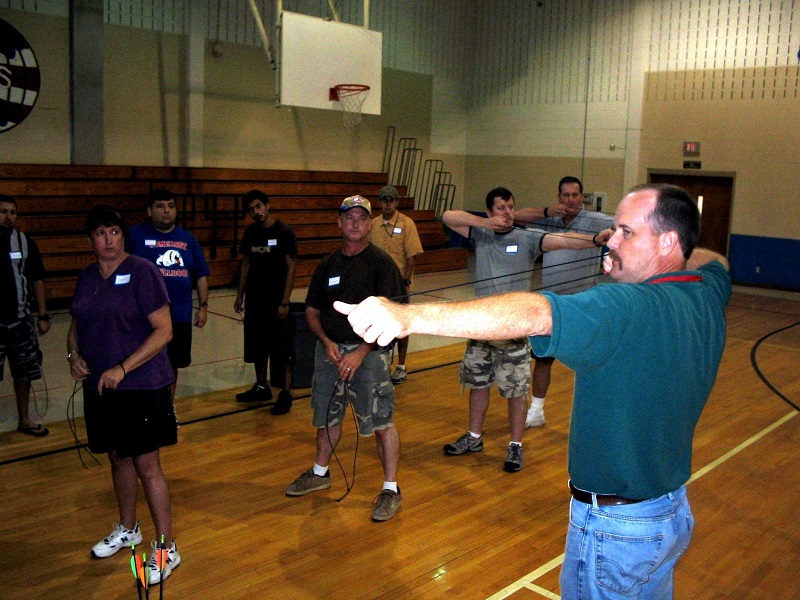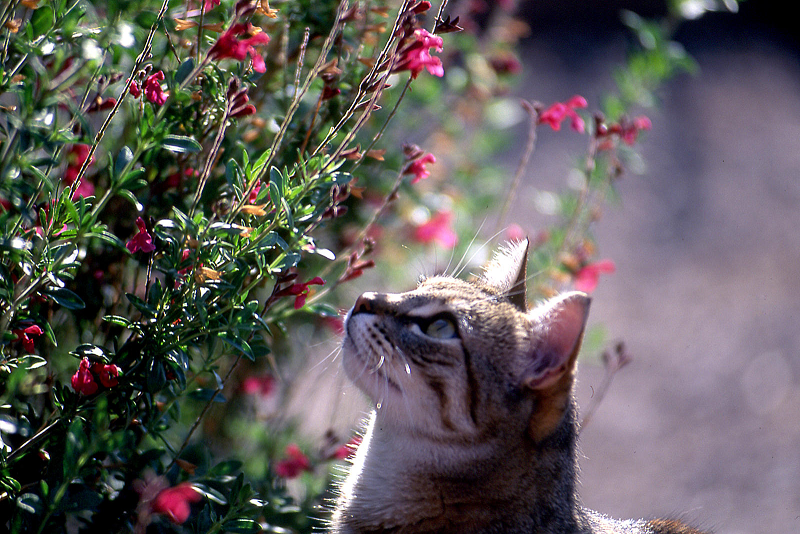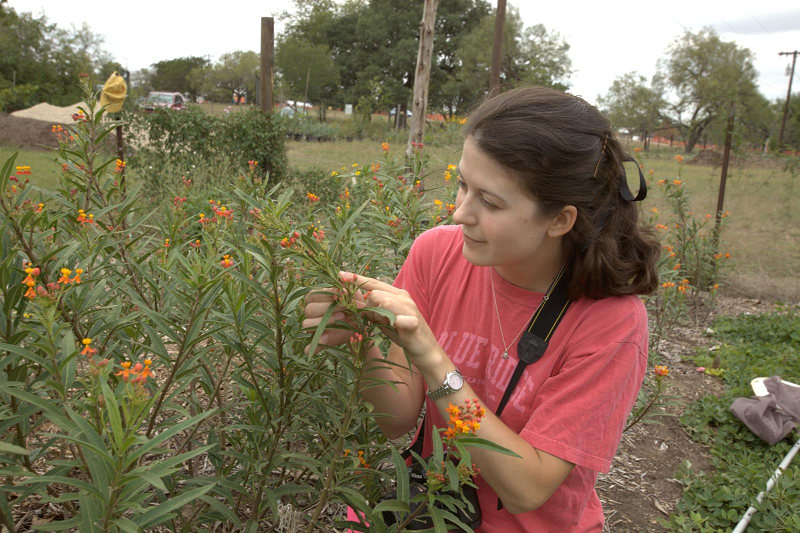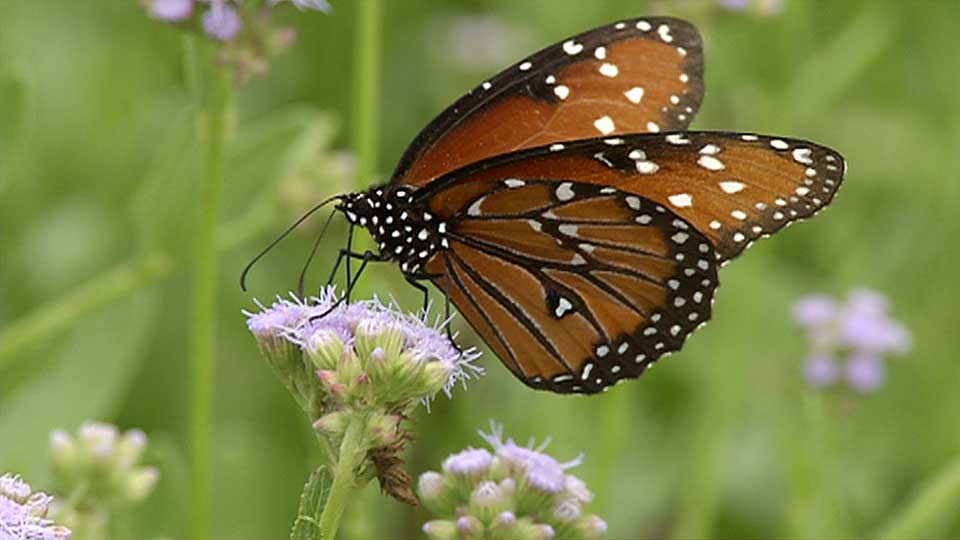September 1st, 2016

Quail, cauliflower mash, and pickled onion from a previous Central Market Cooking School & Texas Parks and Wildlife Wild Game and Fish Cooking Class.
This is Passport to Texas
Summer temperatures are still taunting us—but fall hunting season starts this month, and with it opportunities to cook wild game.
For five years Texas Parks and Wildlife’s worked with Central Market Cooking Schools to offer statewide, hands-on public cooking classes featuring preparation of wild game and fish at home.
A Texas Parks and Wildlife representative is always on hand to provide attendees with background on the agency, conservation, and information about the species on their plates.
Everyone loves bacon wrapped dove breasts on the grill, fish tacos, or venison in a slow cooker in Italian dressing. But it’s nice to have new recipes to put the “wow” in your next wild game and fish dinner.
In past classes attendees learned how to make Venison Medallions with Juniper-Black Pepper Brandy Sauce, Pot Roasted Pheasant with Cider and Bacon; Vietnamese style baked Snapper; and Braised Rabbit with Wild Mushrooms, to name a few.
Folks who register for the Tuesday, September 13, Texas Parks and Wildlife & Central Market Wild Game Cooking Class will prepare and eat Wild Boar Sausage Patties; Quail with Wild Rice Pilaf; and Duck Gumbo. Perfect fall foods-even if it still feels like summer.
Find registration information at passporttotexas.org.
For Texas Parks and Wildlife, I’m Cecilia Nasti.
Register for a class near you:
Posted in Central Market Wild Game and Fish Cooking Classes, Feral Hog, Food, Quail | Comments Off on A Tasty Game Day with Parks and Wildlife
August 31st, 2016

Bernie Kessner teaching archery to teachers.
This is Passport to Texas
Archery—the original shooting sport—fell out of favor as a component of physical education in public schools some years ago. But, now, thanks to the National Archery in Schools program, interest in the sport is growing fast.
The National Archery in Schools program certifies teachers as instructors. Educators learn the program just as they will teach it to their students.
It’s an all day workshop to become a certified instructor. They learn with the same equipment and the same method.
Burnie Kessner is archery coordinator for Texas Parks and Wildlife.
We use international style archery. It’s bulls-eye target faces, Olympic size. We use Olympic whistle commands, and they learn the same way worldwide.
Kessner says while certified instructors prepare students for tournaments, the successes a child experiences extend beyond the bulls-eye.
So, when a kid is shooting archery, and they’re on the shooting line—they’re all the same. So, it doesn’t matter what kind of home they go home to after the tournament, when they’re at the tournament, they’re the same as everyone else. So, that’s the self-esteem building piece; it’s standardized.
Learn more about bringing the Archery in Schools program to your district on the Texas parks and Wildlife Website.
Our series receives support from the Wildlife and Sport Fish Restoration Program… working to increase fishing, hunting, shooting and boating opportunities in Texas.
For Texas Parks and Wildlife…I’m Cecilia Nasti.
Posted in Education, Wildlife and Sport Fish Restoration Program | Comments Off on Archery in Schools: The Great Equalizer
August 30th, 2016

Miss Kitty on the lookout for native bees.
This is Passport to Texas
Fear of being swarmed by bees keeps some of us from adding flowering plants to our landscapes. Although native solitary bees are small in stature, that doesn’t stop us from being nervous when they’re nearby.
You know, folks have concerns about bees flying around in the yard and planting more flowers. The thing is that, even social bees, like honeybees, when they’re away from their nest and they’re foraging on flowers, they have no interest in you.
If you are allergic to bee stings, you may wish to err on the side of caution. Yet, Michael Warriner, non-game and rare species program leader for Texas Parks and Wildlife, says for the rest of us, embrace flower power.
If you plant more flowers, you don’t have to worry about these bees attacking you. Unless, you were to directly harass them. Let’s say, by grabbing them…or…something like that. But, otherwise, there’s no danger.
Pollinator populations are in decline because of habitat loss. Flowering plants help furnish food for them.
A robust population of solitary bees helps to ensure a thriving native ecosystem.
If you live in a condo or apartment, you can still help native pollinators by cultivating containers of flowering plants on your patio, balcony, or rooftop.
Find a list of plants for pollinators on the Texas Parks and Wildlife website.
The Wildlife Restoration program supports our series.
For Texas Parks and Wildlife…I’m Cecilia Nasti.
Posted in Uncategorized | Comments Off on Encouraging Native Bees with Flower Power
August 29th, 2016

Looking for pollinators on backyard flowering plants.
This is Passport to Texas
Texas Parks and Wildlife developed a new protocol that addresses land management for pollinators. While the protocols focus on acreage, urban dwellers can still manage for these species in their backyards.
One of the biggest things that urban residents can do is simply plant more good quality flowering plants.
Michael Warriner is non-game and rare species program leader for Texas Parks and Wildlife. He says native plants are best, but noninvasive nonnatives are also useful. He adds that if you’re serious about helping pollinators—scale back your lawn.
And having more flowering plants. Also, another thing is offering nest sites. And especially with our native solitary bees that nest in dead wood, urban folks can put up native bee nesting blocks.
If you’re worried about putting up nesting boxes because of the close proximity it puts you to bees—don’t.
Because solitary bees don’t defend their nest sites, you don’t have to worry about these bees flying out and defending their nests and getting stung. Let’s say like honeybee colonies do. Or, paper wasps. You know, insects that are social.
By planting more flowering species in your landscape, and by hanging bee nesting boxes in your public outdoor spaces, you are not only providing food, shelter and breeding sites for important pollinators, you’re also creating a more beautiful setting for yourself. Win-win.
That’s our Show…Funding provided in part by Ram Trucks. Guts. Glory. Ram
For Texas Parks and Wildlife…I’m Cecilia Nasti.
NOTE: October 7 – 16, 2016 participate in the Texas Pollinator BioBlitz. Learn more when you click here.
Posted in Monarchs, Pollinators | Comments Off on Flowers, Boxes, and Bees. Oh My!
August 26th, 2016

One of the many butterfly species you’ll find in the Texas Rio Grande Valley
This is Passport to Texas
A diverse array of wildlife viewing opportunities can be had in Texas. Especially in the Rio Grande Valley, where visitors—like David Dauphin—travel to see butterflies.
You can see more species of butterflies than anywhere else in the United States. It’s just another aspect of the wildlife watching that’s so fantastic in the valley.
During the week of August 28, the Texas Parks and Wildlife TV Series on PBS airs a segment called Betting on Butterflies, which looks at this relatively recent wildlife viewing obsession.
Butterfly field guides didn’t really start coming out until the mid-90s, I guess. And like birding, you eventually start checking them off a list, and that sort of thing. Butterfliers are really birders that have gone over to the dark side. It’s just a progression.
Many people visit the valley to add new butterfly species to their list, yet, locals, like Kay Cunningham, find joy in an old favorite—the monarch—during its fall migration.
It’s always a big thrill when they start coming in. This part of Texas is kind of plain. But, there is a beauty in this country that you have to be patient and wait for. And the monarch are one of those.
Immerse yourself in the beauty of butterflies the week of August 28 with the Texas Parks and Wildlife TV Series on PBS, Check your local listings.
For Texas Parks and Wildlife…I’m Cecilia Nasti.
Posted in Monarchs, TPWD TV | Comments Off on TPW TV – Betting on Butterflies







 Passport to Texas is a
Passport to Texas is a  Passport to Texas is made available by:
Passport to Texas is made available by: